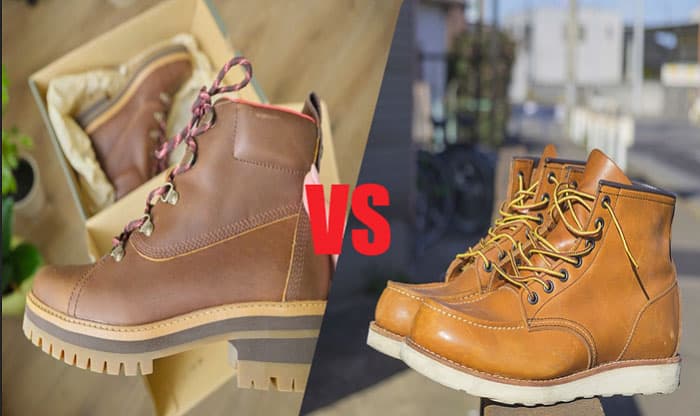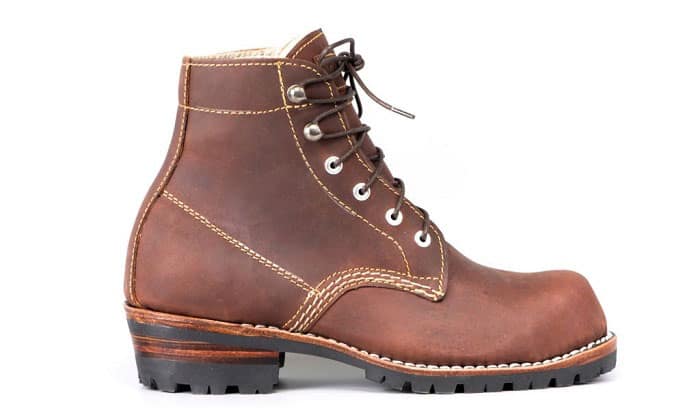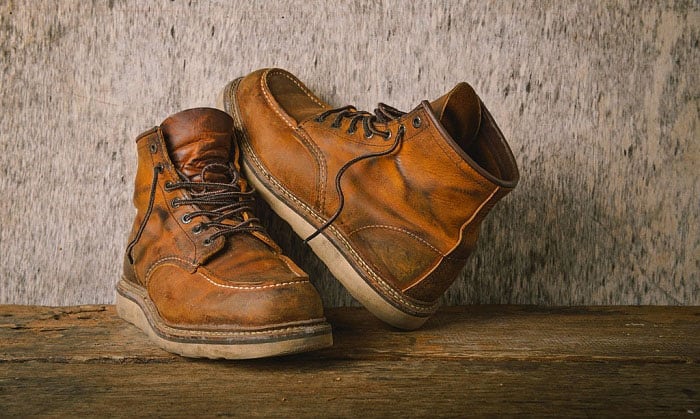As it affects your safety, you should always be careful when choosing work boots. Like many safety boot wearers, you might have wondered about the functions of a wedge sole and a heel one. Both are classical designs and plenty of people prefer one over another for many practical reasons. Besides the difference in appearance, do they differ from each other in terms of functions and protection?
In this article, you will learn about wedge sole vs heel work boots. Each type of sole is designed for different surfaces and working conditions. While wedge soles are more on the comfortable and all-around side, heeled boots are for heavy-duty work on uneven terrain. Dive in for further details!
Table of Contents
Heel Work vs Wedge Sole Boots
1. Design
You can spot their difference in the design at first glance.
- Heel work boots: Also known as lug soles, heel soles are two-piece designs with a raised heel and a bed under the midfoot and toes area. They offer a planted feeling on the feet and ensure gripping.
- Wedge sole: Wedge boots, also known as wedgies, are boots with the sole made from one piece of material that serves as both the heel and the midsole. The design mimics a human’s foot, giving a natural feeling like a second skin.
2. Safety
In terms of safety, wedge sole and heel work boots can offer high protection as long as they are suitable for your job. Both come with a variety of safety features like:
- Shank: A shank is a flat and thin piece made from steel or composite material inserted in the sole of a work boot. It protects the foot against injuries from punctures.
- Oil-resistant sole: An oil-resistant sole is made from rubber that either absorbs oil or is weakened by the substance. If you work on an oil rig or in an oil handling procedure, this feature is a must. Both wedge sole and heel boot styles can be oil-resistant.
- Slip-resistant sole: A slip-resistant sole is designed with certain patterns (some brands make the pattern look like a car type grip) to prevent slips and trips. Both wedge soles and heels can be slip-resistant.
- Electrical hazard protection sole: Basically, it acts as an insulated layer that distances your feet from the electric sources. For boots to get electrical hazard safety rated, the entire boot surface must be of non-conductive materials. Also, they must meet the ASTM (American Society for Testing and Materials) standards.
In terms of protection level, both sole styles are equal. Make sure you look for the protective features that your job requires.
3. Comfort
- Wedge sole: As mentioned above, wedge soles are designed to bring maximum comfort to the wearers. They are usually made of lightweight rubber, which makes them feel comfy, nice, and bouncy on the feet. Moreover, the sole is only from one piece of material, allowing your body weight to be distributed equally from the heel to the toes of your feet.
Comfort is one of the greatest wedge sole work boots benefits. If you are buying boots for all-around jobs, look no further.
- Heel: There is often a debate about the comfort of heel work boots. Some people prefer the raised heels for easy and supported movement. On the contrary, some people believe this boot style puts too much weight on their heels. It truly is about one’s preference.
Though weighty, heel work boots can be comfortable when they are made from the right materials. Otherwise, they can be relatively bulky and unpleasant. To maximize their potential, when buying heeled work boots, you should ensure they come with cushioning and foot support features.
Wedge, Heel Work Boots: When to Use
Wedgies: Flat sole work boots are highly recommended for farming, paving, concrete work, and ironwork. The stability and comfort they offer makes them excellent for jobs that require a lot of standing and walking around.
If you intend to buy wedgies, watch this video about Red Wing vs Thorogood wedge sole work boots for further information.
Heel work boots: While wedgies offer stability and comfort, heeled boots offer more traction. For people who work on uneven and muddy terrain, heel work boots are a great choice. The gaps between the ball and heel of the foot provide a good amount of grip. Therefore, wearers can walk steadily even on soft, muddy surfaces. This boot style is recommended for loggers, snow shoveling workers, or people who work with ladders.
Conclusion
It is difficult to say whether wedge or heel work boots provide better protection. Even though heels offer traction on uneven ground, wedge soles provide excellent mobility and flexibility on hard surfaces at commercial construction sites. If you need additional protection, remember to look for the reinforced varieties.
When used the right way, both boot styles serve their purposes very well. We hope you’ve gathered enough information to make the smartest choice between wedge sole vs heel work boots when it comes to buying work boots. Feel free to leave us a comment should you have further questions. See you then!

Veronica is our content editor. She is a talent in delivery. Her main work is editing and writing articles that are both informative and simple to follow. She is in charge of synthesizing our understanding of what personal protection equipment (PPE) is needed in each job, how to best apply it, and how to visualize that equipment.




